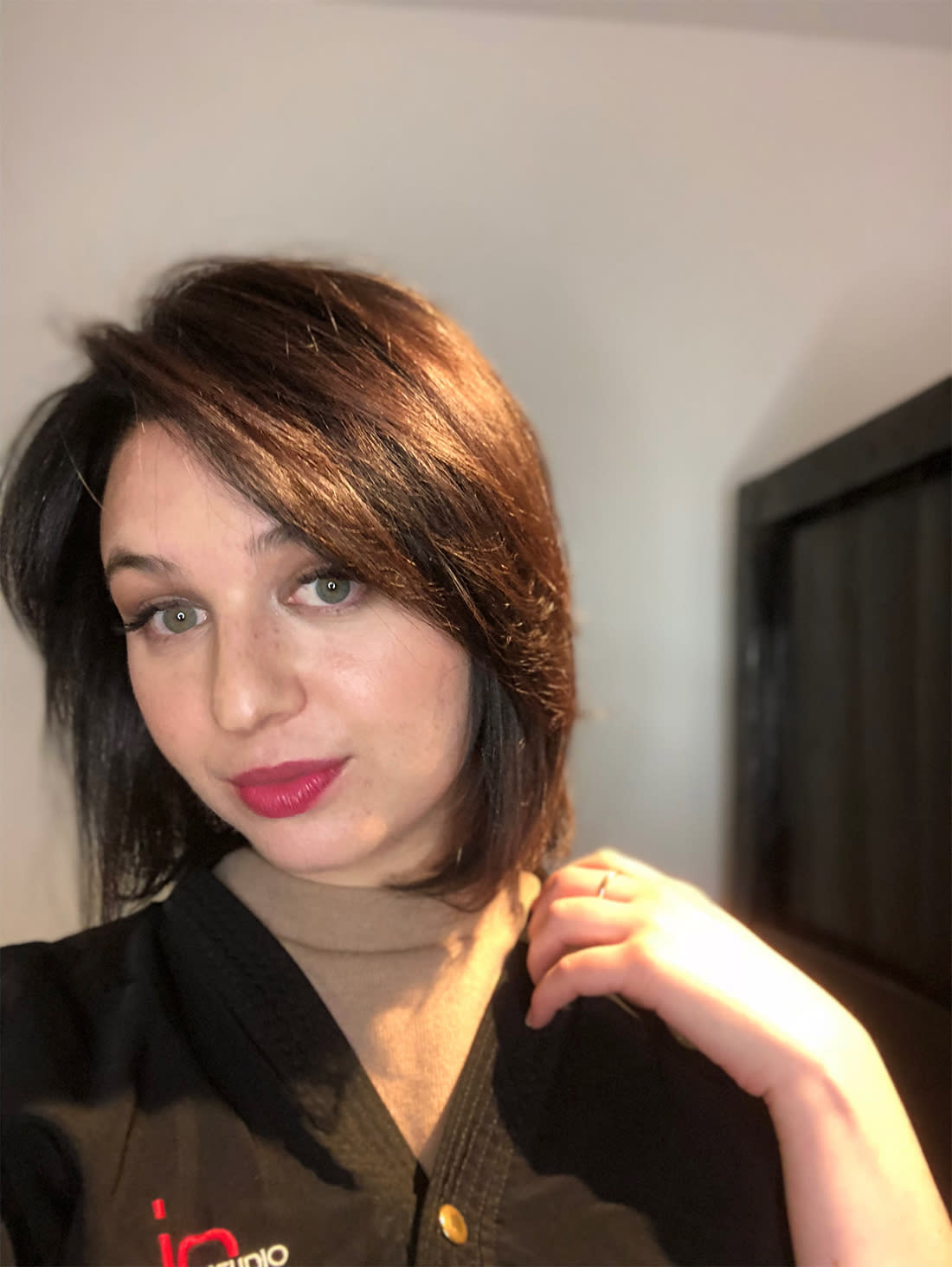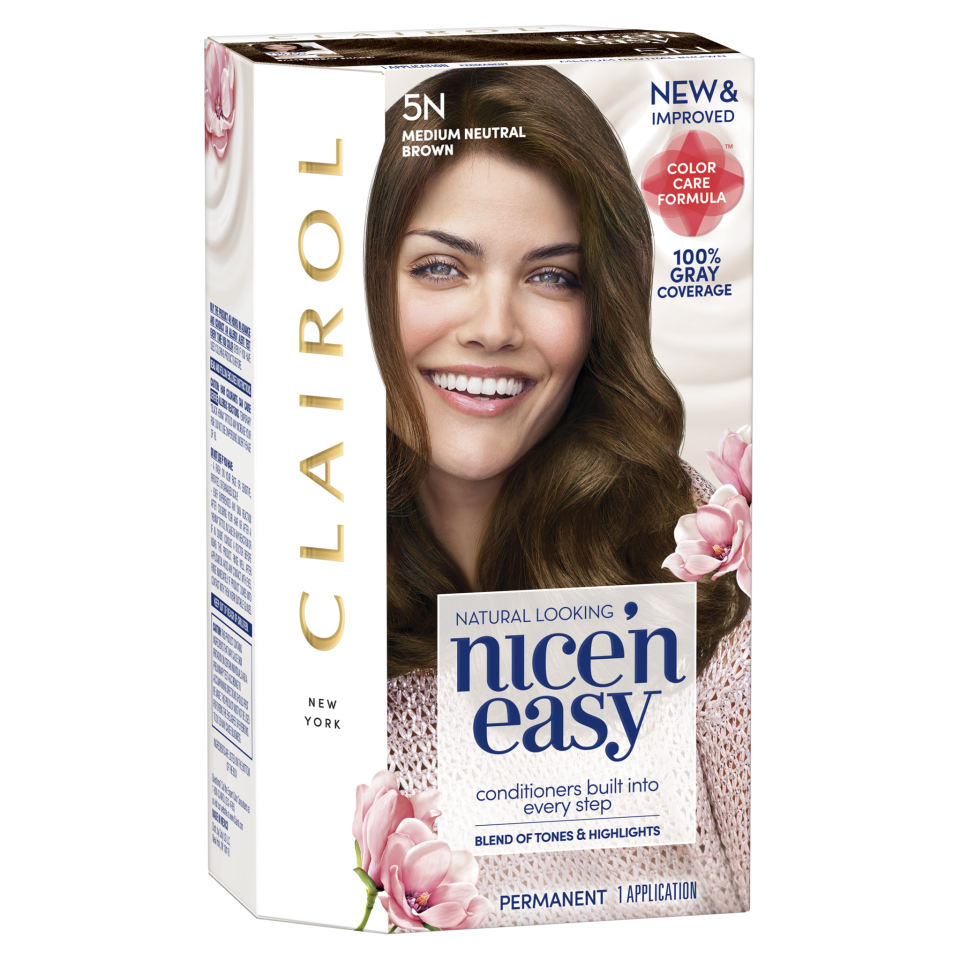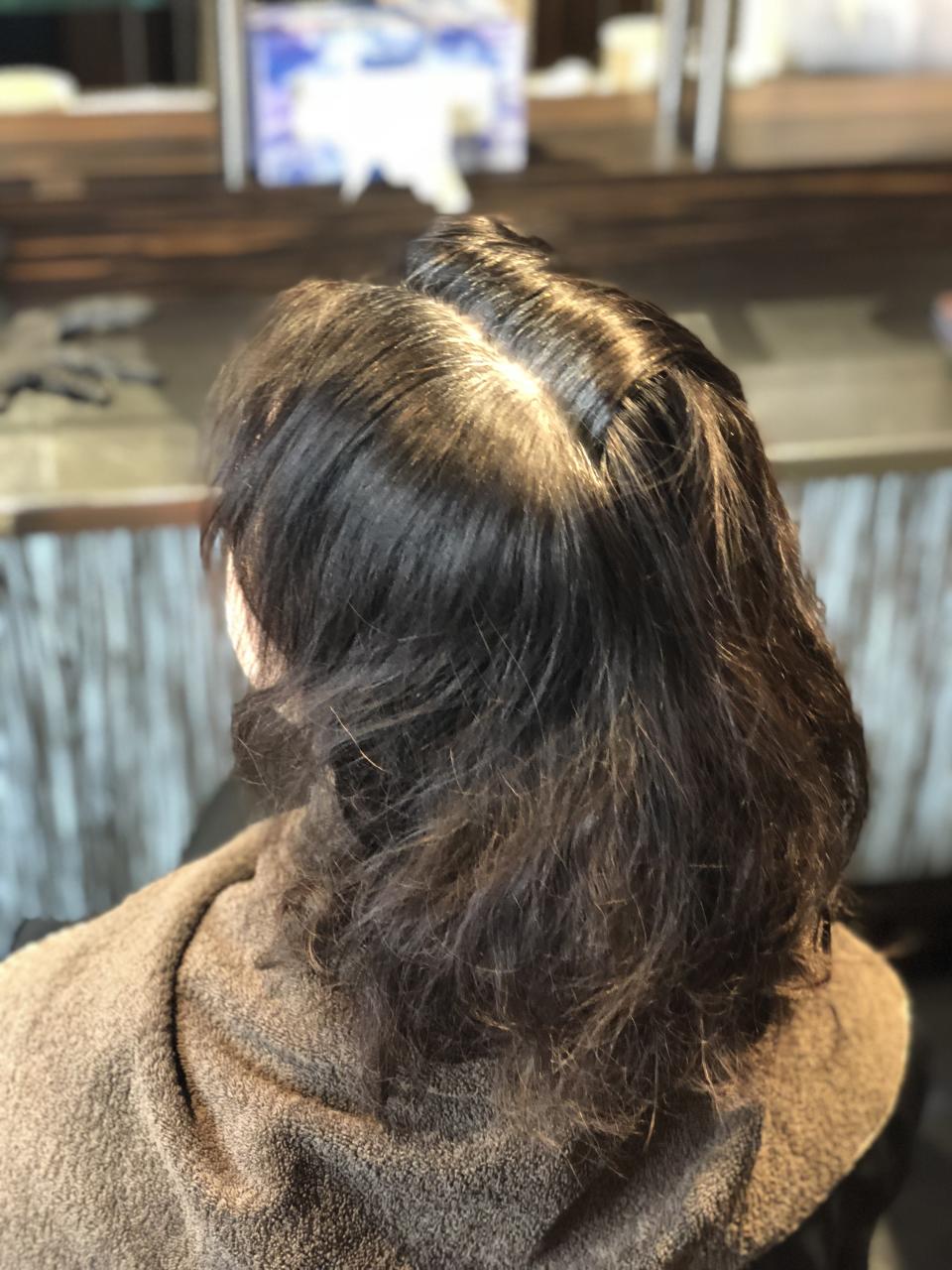Why I'm ditching expensive salon visits for an $8 box of hair color

In 2017, I spent thousands of dollars at salons in New York City entrusting professionals to color, cut, bleach, and condition my hair. It’s an inadvisable thing to do for someone whose budget really doesn’t allow for expensive grooming habits.
But I was also unwilling to color my hair without a professional. Wary of damage, I justified visits to those salons — where color appointments typically run a couple of hundred dollars — believing that at-home hair color wouldn’t give me the kind of quality color I wanted.
So, when Clairol offered me the opportunity to test its new Nice ‘n Easy at-home color kit, I was skeptical. Box color? I’d heard enough horror stories to think I’d be heading down a path whose end was certain disaster for my precious locks.
At the service of our dear Yahoo Lifestyle readers, I made a visit to the James Corbett Studio salon in Manhattan to talk about the new color formula with Corbett himself, who works as Clairol’s color director. I had some pressing questions for the veteran colorist: First, how effective is at-home hair color compared with the professional product to which I’d grown accustomed? Why is there a stigma around using at-home hair color? And what’s so special about this new formula that would persuade me to ditch the more expensive formulas that licensed professionals use?

Corbett explained to me that he’s been overseeing the development of the new Nice ‘n Easy product for five years, but the past two and a half years (after Procter & Gamble sold parts of its beauty portfolio to the global beauty conglomerate Coty) have kicked the process into hyperdrive. What he’s observed in that time is a convergence between the quality and chemical makeup of at-home product and professional formulas.
“We’re really marrying the professional and at-home technology together,” Corbett said. Meaning?
If you’ve ever watched a professional cosmetologist mix your hair color, you’ll notice something that looks less beauty shop and more chemistry lab, as the colorist mixes different shades to achieve the right dimension and depth for you. While you could purchase two different at-home hair color kits to strike a balance between two shades as a professional might, you’re not only risking a color you didn’t intend to get, but you also risk damaging your strands.
Considering those risks, the new Clairol Nice ‘n Easy kit makes a lot of promises to convince consumers it’s actually really difficult to muck up the process. The new product claims it will reduce the risk of an allergic reaction to hair color for those without a preexisting allergy (based on a new molecular component in the formula that has been in development for 20 years). It touts 100 percent gray coverage (a personal color goal) and “rich, layered tones and contouring highlights.” That’s a lofty pledge for an $8 box of hair color.

The box includes three items for a step-by-step application that’s easy enough to figure out, even for rookies. All you have to do is mix the tube color with the developer, held in a conveniently packaged applicator bottle. Corbett suggested I mix Clairol’s Nice ‘n Easy 5C and 4N shades to achieve the deep, dark brown hue I wanted, but warned users if they’re unsure of which color they should choose, go lighter. (“It’s easier to go darker if you’re unhappy with the color you’ve picked, but it’s much harder to go lighter once you’re dark,” he said.) And if you’re especially uneasy about your color choices, it may be worth waiting to consult with a professional.
Once you’ve applied the color to your roots, allow it to rest for 25 to 30 minutes (35 minutes tops, Corbett says). For most people, their hair’s ends are drier than their new growth along the scalp, so it’s best to work the color through the ends about 15 minutes into the process, not at the beginning. That’s supposed to reduce the damage caused by the chemical processing to your hair’s most vulnerable bits. Another pro tip: Spritzing water through a spray bottle when you’re pulling the color through to your ends deposits the product more evenly and dissipates the damaging ammonia.

Speaking of ammonia, the biggest difference I noticed while Corbett applied the product to my hair was the smell — that is, the new formula promises to reduce the suffocating aroma of ammonia, replacing it with perfumed floral notes. Promise fulfilled.
The last step is to use the provided conditioning creme after you wash the color out of your hair, which vows silkiness unrivaled by previous at-home formulas. Much to my surprise, my hair did feel softer, a satisfying discovery that really became noticeable once I’d blow-dried my hair to reveal intense shine. (There’s a reason Corbett’s called the “gloss boss,” it seems.)
Overall, the process was painless, easy to follow, and, most important, cost-effective. Corbett convinced me: “Part of my mission has been breaking the taboo between doing at-home versus salon color,” Corbett said. “There are some things you need to go to a salon for, and there are some things you can do at home.”
It seems Clairol’s done a good job of converting even the snobbiest salon savant into an at-home color believer.
Read more from Yahoo Lifestyle:
Follow us on Instagram, Facebook, and Twitter for nonstop inspiration delivered fresh to your feed, every day.